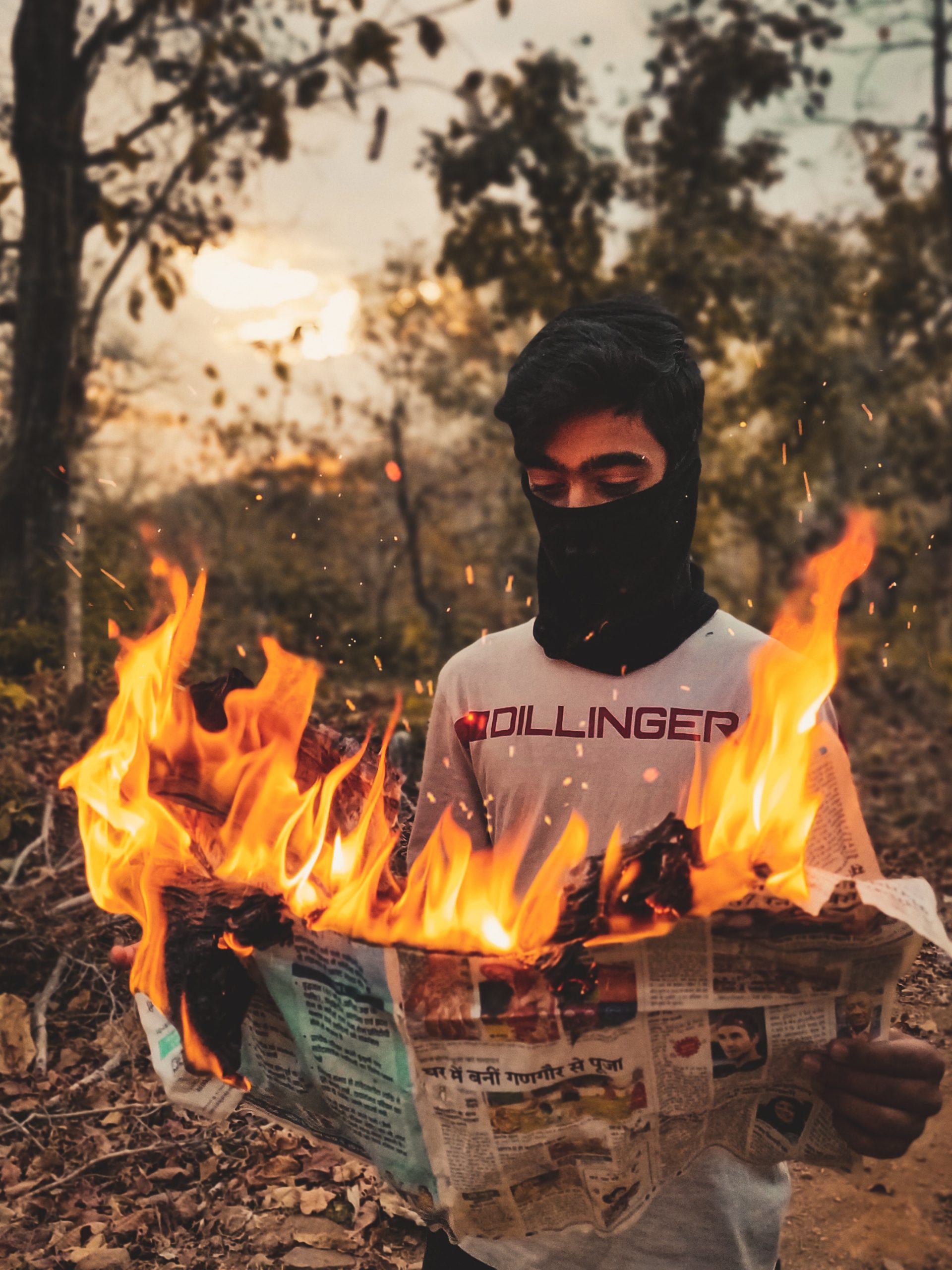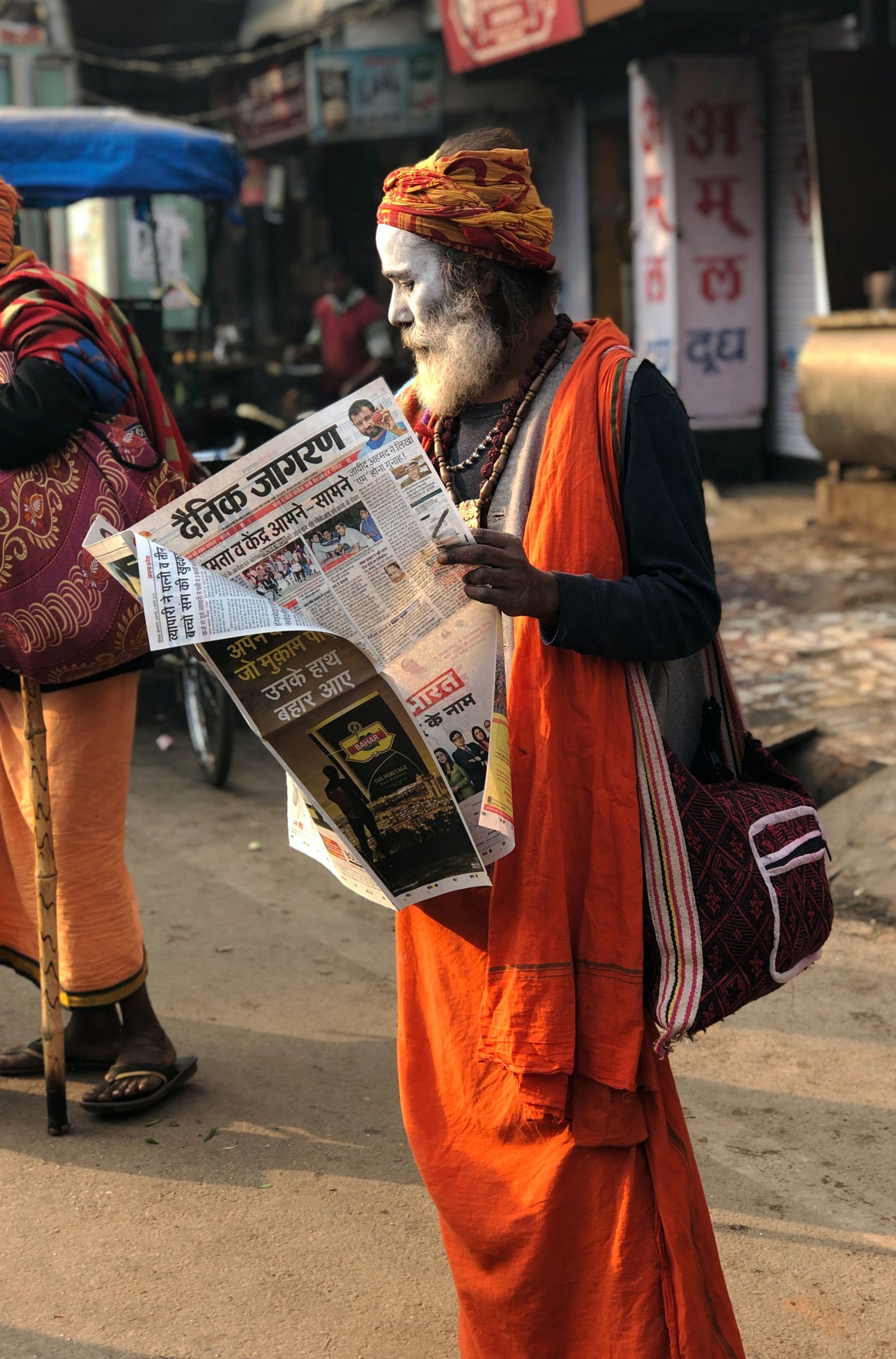The narrative of ‘mob-lynching’ in India – Part I

In 1994 in Vaishali district of Bihar an IAS officer G Krishnaiah, who was serving as the district magistrate of Gopalganj in Bihar was dragged out of his car and killed by a politically motivated mob. More recently in 2007, ten people from the Nat community were beaten to death by an angry mob in Vaishali district of Bihar. This incident was referred to as the “most gruesome lynching ever” by most of the then news channels and papers which reported that the victims were accused of theft and the “mob fury led to the killings”.
Switch to 2020, on April 16th an angry mob lynches two sadhus after snatching them away from the police custody in the Palghar district of Maharashtra. The policemen escorting the two victims turned away as the mob beat them to death. While the news reports called it mob-vigilantism based on rumours of the sadhus being child kidnappers and organ harvesters, the blame mostly fell on the state authorities’ incapability of maintaining law and order and less on any political or social/communal factors as causal to the incident. Neither of the above-mentioned incidents were painted in a communal sense by the mainstream media and the crime remained to be seen as a ‘law and order’ issue. Whether that has been the case while reporting other incidents, irrespective of the victim’s identity and the cause for the crime is what this series will attempt to analyse.
Mob-lynching as a crime in India
Lynching is a word commonly used for acts of mob-violence and mainly those that have a vigilantist characteristic. The crime is basically committed by a mob that takes the law in its own hands to punish a supposed perpetrator. It is generally booked under various provisions of the Indian Penal Code including Sections 120A (criminal conspiracy), 141 (unlawful assembly), 146 (rioting), 339 (wrongful restraint), 331 (grievous hurt to extort confession) and sometimes even 302 (murder) and/or 304A (causing death by negligence).
These provisions are different from the provisions in IPC that have any communal undertones and are punished for being communal crimes per se. To name a few – Sections 153 A (promoting enmity on religious grounds), 153B (communal imputations prejudicial to national integration), 295A (deliberate malicious acts to outrage religious feelings) 505 (communal statements/rumours that cause public mischief) and various other provisions that find place in specific legislations like the Police Act 1861, the National Security Act 1980, the Unlawful Activities (Prevention)Act 1967, The Places of Worship Act 1991, The Protection of civil rights Act 1955, and the Scheduled Castes & Scheduled Tribes (Prevention of Atrocities) Act 1989 etc. India has adequate laws directed towards crimes of communal violence but neither of those are employed while charging criminals in cases of mob-lynching unless that is, upon investigation in due process the crime is proven to be of a communal nature or a hate crime.
There not being a defined provision dealing with mob-lynching or vigilantism in the penal code does not dilute the basic characteristic of the said crime, i.e. a mob taking law in its own hands. It can only be called communal lynching after an investigation that leads to such evidence. It is due to this ambiguity in any kind of classification beforehand and the consequent scope of misrepresentation that the National Crime Records Bureau (NCRB) has refused to define/treat ‘mob-lynching’ as a separate crime from that of general mob-violence or from those that fall under specific provisions of IPC. The Bureau also cited unreliability of the data for incidents under any such classification. Few states like Manipur, Bengal and Rajasthan have promulgated laws to tackle mob-violence in particular. These are a consequence of the much-famous 2018 judgment of the Supreme Court in the Tehseen Poonawalla Case, where the Court issued certain guidelines for the states to handle the issue. The SC itself did not identify the crime of mob-violence/ lynching as a communal one unless proven so. One of the guidelines of the apex Court was:
“The Home Department of the Government of India must take initiative and work in co-ordination with the State governments for sensitizing the law enforcement agencies and by involving all the stake holders to identify the measures for prevention of mob violence and lynching against any caste or community and to implement the constitutional goal of social justice and the Rule of Law.”
Therefore, it can be said that Indian legal regime while having recognised mob-violence as a crime much before than it became a media-highlight, has never classified it as communal or hate crime per se or specified it as ‘lynching’. This is a new phenomenon and a new narrative.
Between 2014-2020
The issue got most attention from the mainstream media mainly in the tone that the incidents have increased manifold after 2014. In 2017 and after, various media publications and channels were seen citing data reported by an NGO on lynching in India (between 2010-2017) to the tune that – about 97% of such attacks have been after 2014, 52% of victims in cow vigilante attacks have been Muslims, 52% of such incidents were based on rumours and that 84% of those died in such incidents were Muslims etc. This and other data published by this NGO was so passionately and blindly relied upon by the mainstream media and in certain political circles that anyone hardly pointed out that the authors, the interns at this NGO based this data on a collection of media reports only and not on true records of complaints or convictions. The NGO’s report/article itself says that the National Crime Records Bureau and the State Bureaus do not differentiate in mob-violence as a crime based on its cause i.e. there is no specific data for lynching in cow vigilantism cases or specifically for child-kidnapping or thievery cases.
That there can be no comparison between the number of media reports of mob-violence/lynching incidents before 2014 and after, since thousands of internet-based news portals have sprung up lately that were never there before. Considering that only about 7.5% of Indian population had access to internet in 2010 whereas more than 50% were recorded as having access to internet in 2019, online media reporting in the last few years have to be high anyway. Therefore, a report that relies on lopsided reporting of media itself as its data source cannot be the most accurate one. Even sourcing data merely on complaints instead of convictions would have been half-baked.
However in the Parliament, never before 2014 had the issue of mob-violence or vigilantism been referred to as “lynching” or discussed in communal undertones. The term ‘lynching’ was used first time in a Lok Sabha debate on 11th June 2014, right after a month of change in power at the Centre. Heightened discussions on communal intolerance, communal lynching, cow vigilantism as a subset of communal violence etc. happened in the Parliament between 2014-2020 and consequentially the Union government issued various notifications and advisories to the State governments on how to strictly handle cases of mob-violence and vigilantism including those that were specific to the cases of child-kidnapping, fake news and cow-vigilantes. Some of these date before (starting from 2016) the SC judgment of 2018. That the power to make laws and deal with the crimes of mob-violence falls with the State governments and not the Union was made clear by the SC judgment and same has been the stand of the Central government each time the topic was discussed in the Parliament. Within a week of the SC judgment, the Union government had constituted a High level committee chaired by the Union Home Secretary to formulate appropriate measures for the State governments to tackle the issue. A Group of Ministers headed by the Union Home Minister was also formed to review the recommendations given by the committee.
Hence it is clear that in last six years, the narrative around the crime has undergone a drastic transformation, both in the political and public discourse. That the judiciary, legislature and the executive have all been victims of such change in the narrative is clear too. Whether it is a direct effect of the mainstream media’s reportage is something a comparative analysis would show, which the subsequent piece hereof will try to accomplish. The subsequent piece will also explore such effect in change of the narrative in international media which recently has gone to extent of calling India as the ‘lynchistan’.





Parul Varma
This was indeed insightful!